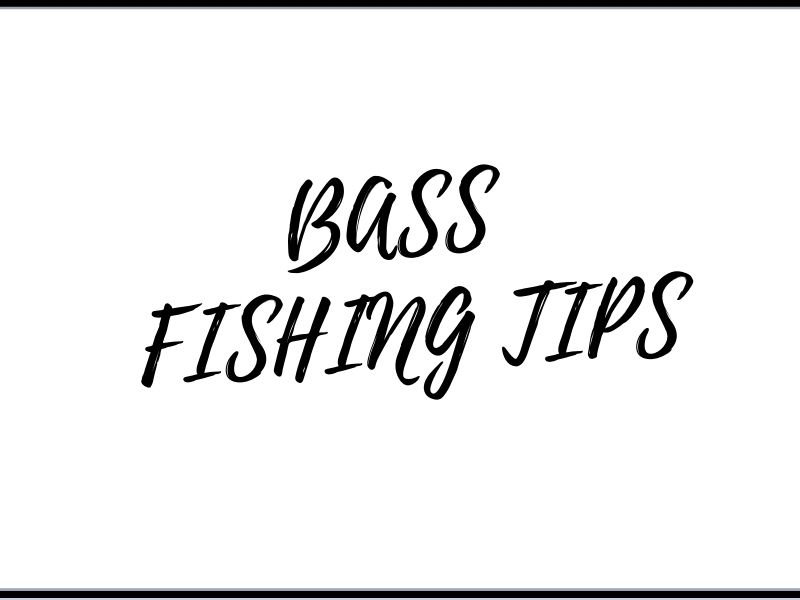How To Catch Bass
Bass filled waters are everywhere which is probably why bass fishing is a favorite of many fishers. There is very likely a great spot to catch the popular game fish close to your own home. When it comes to bass fishing, a little bit of knowledge and technique can greatly increase your odds of a successful catch. Here will cover some of the top fishing tips for catching bass. The most important things for you to learn are where to catch them, and the best kinds of bait to use.
Where to Catch Bass
You can find bass in a wide variety of different bodies of water. Bass can be found in lakes, rivers, ponds, and man-made reservoirs.
In natural lakes you will find largemouth bass. You can find them in lakes that are deep or shallow. Smallmouth bass are more common in deeper northern lakes. Reservoirs are varied in the type of bass you will find depending on the location. Rivers, creeks, and streams are more commonly the waters of smallmouth bass. When fishing in ponds you will more commonly find largemouth bass than smallmouth.
Finding Bass
One of the most important things to greatly increase your odds of catching bass is knowing where to look and knowing when to look. There are typically three seasons where the best bass fishing occurs.
April Pre-Spawn
Usually, around April bass that hang out in deep waters move up into shallow waters to feed and lay their eggs. This presents a good window for bass catching. Look for this opportunity in early spring when water temperatures are roughly 60 degrees.
Summer
When the temperature is warmer bass typically move into cooler deep waters. During the day you will have the most success with a lure fishing in deep waters. In the early morning or late evening when the sun is down, you may find success temping bass with a surface lure.
Late Summer/Early Fall
Towards the end of summer and early fall, an opportunity to catch bass presents itself as bass sense winter coming and begin to feed. Once the lake turns cold bass will become more difficult to catch. This can be one of the best times for bass fishing.
Best Weather for Catching Bass
Small changes in weather can increase or decrease your odds of successfully catching bass. Cold weather makes bass fishing notoriously hard, but before a cold front moves in there may be a burst of feeding activity that can present a good opportunity. Rain can oxygenate the water and energize bass which can make it good for fishing.
Bass Fishing Lures
Plastic Worms
Plastic worms are one of the most popular and effective bass fishing lures. These come in a variety of sizes and colors. For inactive fish, it is recommended to use a slow drag along the bottom of the water to attract bass. If you’re fishing for more active bass during a feeding period you might try a curly-tailed worm that would attract energized bass.
Crankbaits
Crankbaits are hollow lures that are designed to dive to a certain depth ranging from shallow to deep. These lures are designed to mimic baitfish. For bass fishing, you typically want a crankbait that will dive just below the desired depth the fish are biting at.
Spinnerbaits
Spinnerbaits are good for catching bass in a wide variety of conditions. They used to be called “safety-pin” lures because they shape looks like an open safety pin. Spinnerbaits are usually used as a contact lure with a slow to medium retrieve. On any given day a single method might not work so it might be best to experiment with different retrieves to see what is working.
Jigs
Jigs are lures that are heavy lead headed that ride with the hook side up masked with rubber or other materials. They have become increasingly popular for catching bass in recent years. You will commonly find swim jigs that swim through the water or regular jigs which bounce off the bottom to attract bass.
Topwater Lures
Largemouth bass have a jaw that is designed to eat prey swimming above them. This is where topwater lures come in. Topwater lures come in a variety of shapes and sizes and are used to lure fish near the surface of the water. They can be extremely effective at luring bass when the conditions are right.
Swimbaits
Swimbaits are large lures that are designed to resemble fish prey. They are often the lure of choice for catching trophy-sized bass. They are not good for catching large quantities of fish though.
Bass Catching Tips
Fish Near Cover
Bass are well known for hanging out near cover. Cover can be boat docks, grass, wood, stumps and more. Bass hang out near cover because they can easily ambush prey. Fishing in open water can make it difficult to find bass, but if you fish near cover, you can greatly increase your odds
Match the Hatch
Choose a lure that imitates the type of food bass are feeding on. Depending on the body of water, the forage bass typically eat can vary greatly. Try to get an idea of what the bass may be eating and choose lure to imitate that. Here’s a great guide on how to quickly tell what bass may be eating.
Try Out New Techniques
When fishing, it’s incredibly easy to fall into the habit of doing the same things all the time. If you want to greatly increase your bass fishing success rate, constantly be trying new techniques. The more techniques and skills you add to your repertoire, the more versatile the fisherman you will be, which can greatly increase your success rate when the bass responds to a particular technique very well.
Related Posts:
Walleye Catching Tips
Trout Fishing Tips
